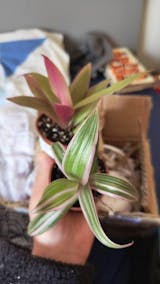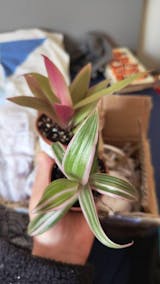








Monstera Minima - Rhaphidophora tetrasperma
Scientific Name
Rhaphidophora tetrasperma (needle-bearing plant with four seeds)
Has been mistaken for Philodendrons and Epipremnums and, most commonly, the Monstera deliciosa but is in fact a completely different Genus.
Common Name
Mini Monstera, Monstera Ginny, Philodendron Piccolo, Monstera Minima
Origin
Native to Southern Thailand and Malaysia
Description
The Monstera Minima is not related to the Monstera deliciosa, or Swiss Cheese Plant; it does look very similar though, hence the name! It is like a tiny version of the more well-known houseplant, growing with similarly shaped 'pinnate' leaves and the same colour of glossy, bright green foliage. Like the larger plant, it is adapted to tropical rainforests; this species is from Southeast Asia rather than South America, but in your home both can thrive in similar conditions! You can train this plant to climb or let it trail down to suit your taste. Choose a spot with bright, indirect light and make sure to water regularly and your Mini Monstera will reward you with gorgeous foliage and petite, pinnate leaves.
Light
Bright, indirect light is best for this plant! It is used to the dappled light of a forest floor so can burn in direct sun.
Water
Allow the top third of the soil to dry out between waters; consistently moist soil will help this plant stay healthy, as long as the soil is not allowed to sit soggy!
Humidity
This plant loves humidity, like in its native rainforests! It will benefit from the introduction of a pebble tray and the occasional hose down of its leaves. Make sure it is not near a radiator which could dry out its foliage too quickly!
Soil
A soil designed for Monstera or Philodendrons will work well here even though the plant isn't a true Monstera; choose a mix that drains well but retains moisture, with components such as coir, bark and perlite. Repot every three years as the plant grows.
Food
Feed every three waters in the growing season, reduce to every four in autumn and winter.
Temperature
Temperatures of about 15-28°C are great- make sure it doesn't drop below 12°C in winter.
Pet-safe
No, this plant is toxic to pets and small humans.
Sprouts Top Tips
If your Rhaphidophora is in a shadier spot, it will need watering much less. Keep an eye out for overwatering symptoms like rapidly yellowing leaves or mould growing on the soil; water less or move to a brighter location to help this!







